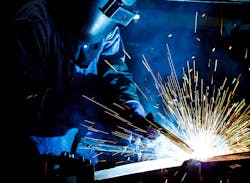At a recent press conference, I attended a session on the skills gap and how to address the ever-growing problem. Currently the number of skilled workers needed in the United States is growing and by 2025 a shortage of 3.5 million workers is expected. In particular, we will have 2 million jobs unfilled because of the skills gap. But what do we mean when we say “skills gap”?
The current skills gap is one of skilled labor. These are your welders, assembly workers, electricians, machinists, etc. These are the people that are currently retiring and leaving the industry. What is most likely to blame is the lack of educational focus on these skilled labor jobs. We have focused less and less on shop classes and technical schools as we have increased focus on theoretical education. Hence, we have created more theoretical engineers without practical education. They know the rules of physics, but not how to manipulate the physical space. These are the jobs we need to fill right now, and for the foreseeable next eight years.
The current skills gap is one of skilled labor. These are your welders, assembly workers, electricians, machinists, etc. These are the people that are currently retiring and leaving the industry.
Although the skilled labor gap is a pressing problem, it is also a short-term problem. The Internet of Things, mobile devices, and robotics are set to take over the industrial world. Many of the day-to-day skilled labor jobs will be performed by smart machines. The impending long-term problem is the skills gap of the future. This is a shortage we are currently creating by developing advanced systems and technology but not future workers on how to operate them. The machines of the future will require not just the practical knowledge of design, but also the knowledge of machine programming. For example, we need mechanical engineers that understand electrical engineering and vice versa. The skilled labor of the future is not just the physical application, but how that will interface with the computer-connected world brought to you by the IoT.
So which one do we tackle? The discussion lately seems centered around how to develop our physical labored work force. I say, why not both? Why not improve the educational model that includes physical skill and computer education? Teach your welder how to program a robot. Teach your electrical engineer how to operate a CNC machine. Instruct your mechanical engineer how to write code. We need to develop the future education model not just to increase the skilled labor output, but future-proof it as well.


